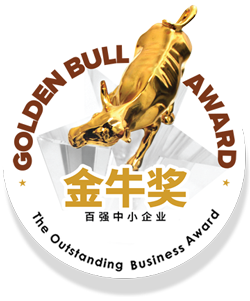SEO DIM SUM SUPPLY
1. Keyword Research and Optimization
- Identify Relevant Keywords: Use tools like Google Keyword Planner, Ahrefs, or SEMrush to find keywords related to dim sum (e.g., “dim sum restaurant,” “Chinese dim sum,” “dim sum delivery”).
- Optimize Website Content: Naturally incorporate these keywords into your website’s content, including menu descriptions, service introductions, blog posts, and meta tags.
- Long-Tail Keywords: Target specific long-tail keywords (e.g., “best dim sum restaurant in [City Name]”) to capture more detailed search queries.
2. Create High-Quality Content
- Menu Pages: Provide detailed descriptions of each dim sum item, including ingredients, prices, and features. Use high-quality images to showcase your dishes.
- Blog Posts: Publish blog posts about the dim sum preparation process, dining tips, and related culture (e.g., “How to Make Traditional Soup Dumplings” or “The History and Culture of Dim Sum”).
- Customer Reviews: Display positive reviews and feedback from satisfied customers to build credibility.
3. On-Page SEO
- Title Tags and Meta Descriptions: Ensure each page has a unique title tag and meta description that includes relevant keywords. For example, “Best Dim Sum Restaurant in [City Name]” or “Authentic Chinese Dim Sum Delivery Service.”
- Header Tags (H1, H2, H3): Use header tags to organize your content and include relevant keywords.
- Image Optimization: Use descriptive filenames and alt tags for images related to your dim sum. For example, “soup-dumplings.jpg” and “soup dumplings in [City Name].”
- Internal Linking: Link to related pages within your site, such as other menu items or blog posts.
4. Local SEO
- Google My Business: Claim and optimize your Google My Business listing with accurate information, high-quality images, and regular updates about promotions or special events.
- NAP Consistency: Ensure your Name, Address, and Phone Number (NAP) are consistent across all online directories and platforms.
- Local Keywords: Use location-based keywords (e.g., “dim sum restaurant in [City Name]”) to attract local customers.
- Online Reviews: Encourage satisfied customers to leave positive reviews on Google and other review platforms. Respond to reviews promptly and professionally.
5. Technical SEO
- Mobile Optimization: Ensure your website is mobile-friendly, as many users will search for dim sum restaurants on their smartphones.
- Site Speed: Optimize your website’s loading speed to improve user experience and search engine rankings.
- Secure Website (HTTPS): Use HTTPS to secure your website, which is also a ranking factor for Google and ensures customer data safety.
6. Build Backlinks
- Quality Backlinks: Reach out to food blogs, local news sites, and industry-related websites to obtain backlinks to your site.
- Guest Blogging: Write guest posts for food or local blogs and include links back to your website.
- Local Partnerships: Partner with local businesses or organizations for backlink opportunities and increased visibility.
7. Social Media and Engagement
- Active Social Media Presence: Regularly share content on platforms like Facebook, Instagram, and Twitter, highlighting your dim sum, promotions, and customer success stories.
- Engage with Followers: Respond to comments, messages, and inquiries to build relationships with potential customers.
- Share Preparation Process: Share videos or images of the dim sum preparation process on social media to attract more attention.
8. Schema Markup
- Add Schema Markup: Implement schema markup on your menu pages to help search engines better understand your content and provide rich snippets in search results. Use types like “Restaurant” or “Menu.”
- Rich Snippets: Enable rich snippets to display additional information such as menu items, prices, and ratings in search results.
9. Monitor and Analyze
- Use Analytics Tools: Track your SEO performance with tools like Google Analytics and Google Search Console. Monitor metrics like traffic, keyword rankings, and user behavior.
- Adjust Strategy: Continuously refine your SEO strategy based on performance data, market trends, and customer feedback.
10. Leverage Industry-Specific Directories
- List in Relevant Directories: Ensure your dim sum restaurant is listed in food and dining directories and local business directories relevant to your market.
- Keep Information Updated: Regularly update your listings with accurate information about your menu, promotions, and contact details.
By implementing these strategies, you can enhance the online visibility of your dim sum restaurant, attract more local customers, and ultimately drive more business.
Inquiry - Website Design - Dim Sum Supply




















